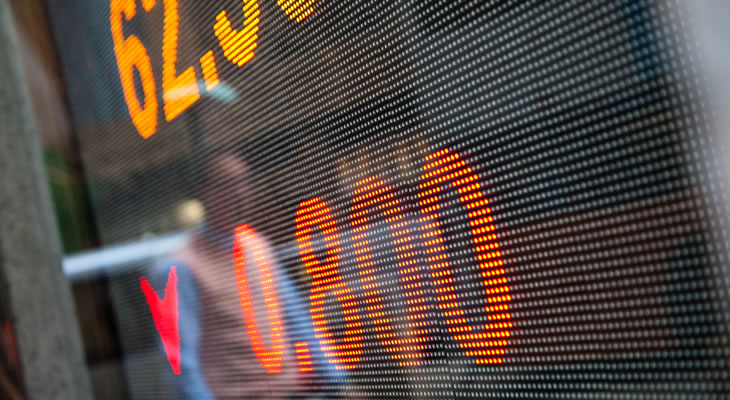Pound to Australian Dollar Exchange Rate Struggles to Climb as Commodity Prices Gain
Despite multiple strong advance attempts last week, the Pound Sterling to Australian Dollar (GBP/AUD) exchange rate eventually ended the week below its opening levels. The pair continues to struggle with its attempts to gain.
Last week saw GBP/AUD fluctuate widely, between lows of 1.7767 and highs of 1.7976. In the end, GBP/AUD merely slipped slightly from its opening level of 1.7844 and its closing level of 1.7816.
This week so far, GBP/AUD has been unable to hold above its opening levels. Sterling (GBP) has lacked the drive to advance, while the Australian Dollar (AUD) benefitted from stronger demand for commodities.
As the Australian Dollar is a risky commodity-correlated currency, it has climbed due to news of rising oil prices and a rebound in iron ore following its losing streak over the past week.
This has made Australian Dollar trade a little sturdier, following its recent lows against major rivals like the US Dollar (USD).
Pound (GBP) Exchange Rates Steady as Investors Await More UK Data
The Bank of England (BoE) took a surprisingly hawkish tone during its June policy decision last week, but markets may need a little more persuasion about the health of Britain’s economy before becoming more confident.
More BoE policymakers than expected voted to hike UK interest rates rather than leave them frozen. With a tighter-than-expected vote, it indicated to the markets that the bank was still confident about Britain’s economic outlook despite recent data.
A slowdown in UK growth, as well as lower rates of inflation and wages, caused investors to become concerned that Britain’s economy may not be able to sustain tighter monetary policy from the bank.
But the bank continues to indicate that it could hike UK interest rates as soon as August 2018.
For now, Sterling’s gains against volatile rivals like the Australian Dollar are limited as investors await more key UK data, such as this week’s upcoming final Q1 growth results.
Australian Dollar (AUD) Exchange Rates Supported by Commodity Gains
The Australian Dollar selloff may have run out of steam, as the currency rebounded from its recent lows thanks to stronger prices of major commodities and weaker movement in rivals.
Sterling’s lack of persistent support helped the Australian Dollar to push GBP/AUD lower, but a large part of the Australian Dollar’s gains was a US Dollar (USD) selloff.
Following a week of safe haven demand and trade jitters, the US Dollar (USD) was sold from its best levels on Friday and Monday. This made it easier for risky commodity-correlated currencies to strengthen.
On top of this, commodity currency demand was bolstered by strong prices of commodities such as oil and iron ore.
Despite news that OPEC was planning to up oil production, markets were optimistic that the market would remain tight and as a result prices remained relatively close to highs.
On top of this, iron ore has rebounded following days of losses and analysts predict there could be further gains ahead. As iron ore is Australia’s most lucrative commodity, this news further supported AUD.
Pound to Australian Dollar (GBP/AUD) Forecast: Growth Results in Focus
Most of this week’s economic calendar will be quiet, but the Pound to Australian Dollar (GBP/AUD) exchange rate outlook could still be influenced by some upcoming central bank developments or UK growth results.
Bank of England (BoE) Governor Mark Carney will be holding a speech on Wednesday. If he shows a shift in tone on monetary policy from the bank’s comments last week, it could certainly influence the mood of Sterling trade.
For example, if Carney remains confident that Britain’s economy is resilient, investors will become even more confident that the BoE is planning to hike UK interest rates in the coming months.
Of course, the biggest event this week in terms of data will be Friday’s UK Gross Domestic Product (GDP) report.
UK growth isn’t expected to change much from its projected results of 0.1% quarter-on-quarter and 1.2% year-on-year.
However, if it beats forecasts it could cause a surge in BoE interest rate hike bets, whereas weaker data would have the opposite effect and make the Pound to Australian Dollar (GBP/AUD) exchange rate far weaker.


Comments are closed.